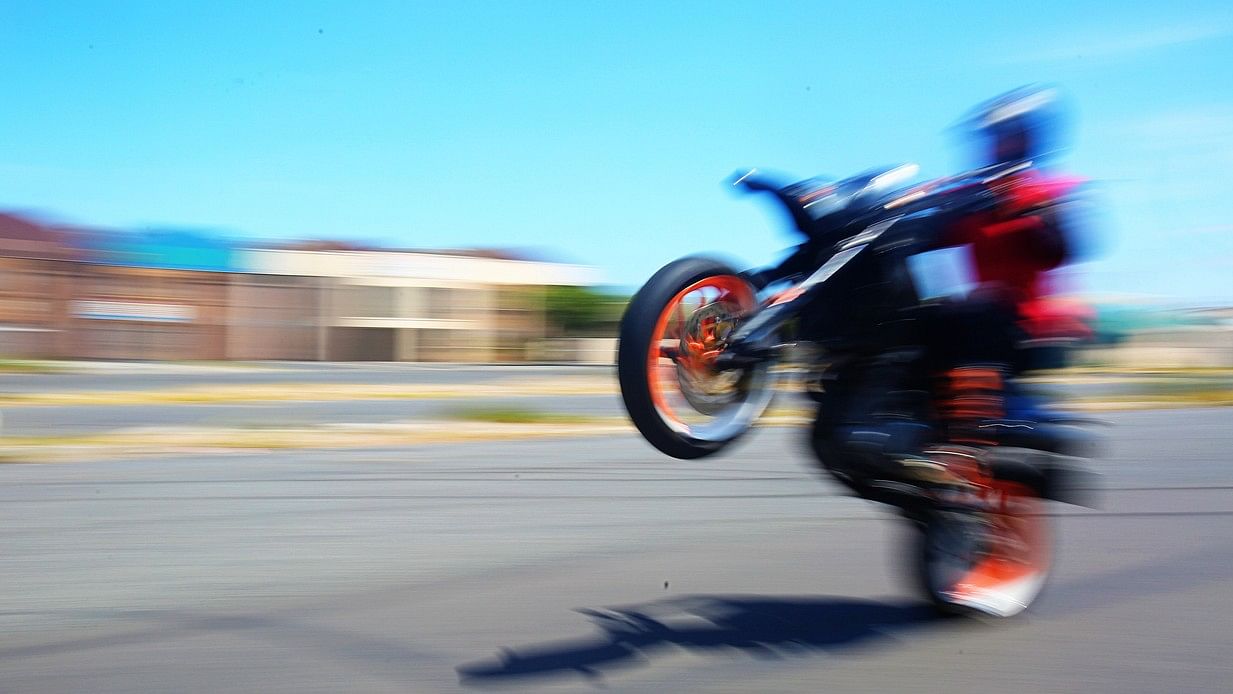
Representative image showing a wheelie.
Credit: iStock Photo
Bengaluru: Several videos of Bengaluru’s youth performing risky stunts on two-wheelers without registration plates have gone viral on X (formerly Twitter).
Many riders are seen doing wheelies without protective gear, raising concerns about road safety.
Kuldeep Kumar Jain, Deputy Commissioner of Police (Traffic, Bengaluru East), commented on the issue to DH, stating, “Our data says the age group of 21-30 make up a significant portion of fatalities due to road accidents. We target this age group in some campaigns for road safety and responsible driving.”
Jain also pointed out that these stunts are more common in economically disadvantaged areas. “It is very hard to actually track the vehicles without a number plate unless they’ve done some big modifications to the vehicle,” he added.
A resident of Hennur highlighted the prevalence of these stunts. “The youth are chasing thrills, but the police do act quickly to stop them. However, we also have issues with speeding superbikes and trucks using loud musical horns early in the morning. These trucks are driven recklessly because of the horns. These problems need addressing.”
Cultural perspective
Meera Baindur, a professor of Humanities, offered a cultural perspective on the issue. “The Brazilian Satere-Mawe tribe has a test of manhood where they endure the bites of bullet ants. In modern society, these rituals are not there. Young men have to use other ways to express their masculinity. This is a continuity of cultural ritual that establishes belonging and hierarchy within the peer group"
Meera further explained that these acts are often a form of rebellion. “While dangerous, they also serve as a way for young men to resist societal pressure to conform. It’s a coming-of-age ritual for them.”
She added that the lack of infrastructure for legitimate outlets plays a role. “In some countries, sports reform youth from violent behaviour. In India, this energy builds up into dangerous activities.”
Meera explained that such dangerous stunts are also the result of consumerism. “You actually do not need expensive equipment to run a marathon or do parkour, but they've pushed the idea that you can play sports only with branded equipment,” she said, stressing the need for better planning to provide access to sports and adventure for all. “(The youth) no longer see heroes like Rajkumar on a tonga, heroes now are always rich and drive expensive cars.”